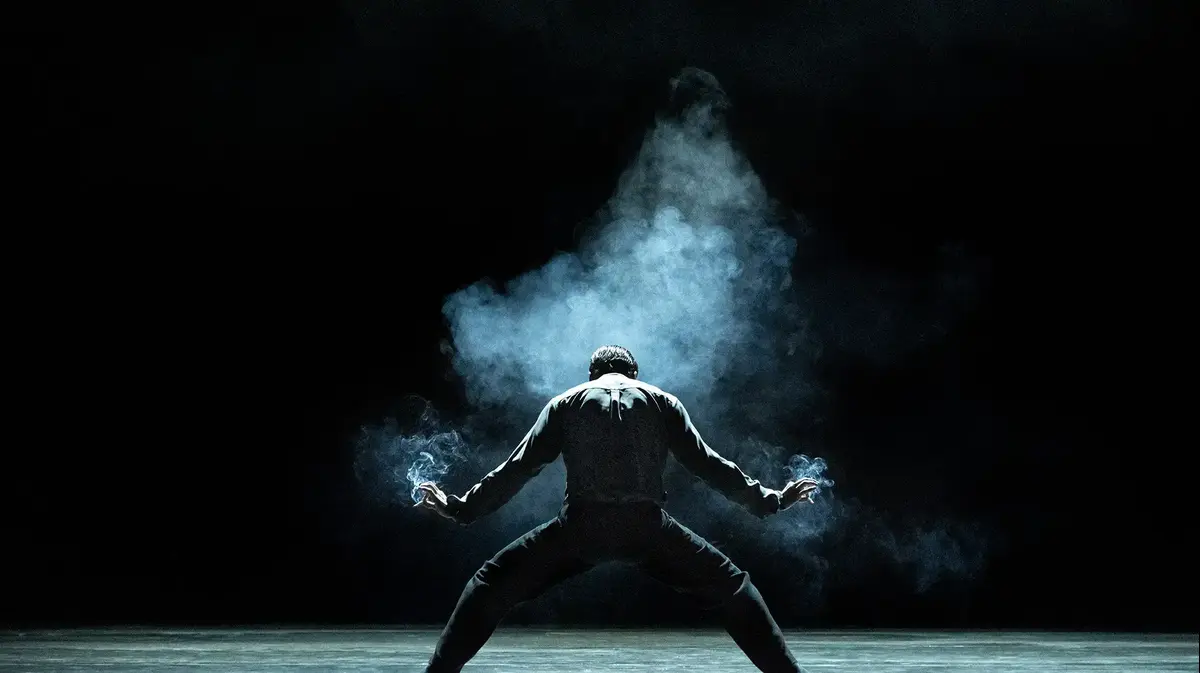On video: The Hanover Ballet "The Lover" (Hanover Ballet and Global Stages)
In 1984, at the end of her life, the French writer Marguerite Diras published her book "The Lover", a book based mostly on her life.
In its center is told the story of the acquaintance of the 15-and-a-half-year-old heroine and her Chinese lover, who is 12 years older than her, and the forbidden romance that develops between them.
But more than this novel, and through it, she describes her adulthood in the shadow of her shattered family, living in poverty in French Indochina, now Vietnam - which can be estimated to have had the greatest influence on the continuation of her adult life, which is no less painful.
She describes her lover as a submissive man, whom she humiliates in front of her family members, who on the one hand forbid this novel and punish her for it, and on the other hand enjoy the material benefits that the rich lover showers on them.
It seems that the girl's estranged relationship with her lover is simply a repetition of the destructive relationship between her and her mother and two brothers.
An impressive stage adaptation for a work full of pain.
From "The Lover" (photo: official website, Ralph Mohr)
"If you come to see a work like this, you should be prepared for something chaotic."
"The Lover" (photo: official website, Ralph Mohr)
The forbidden love in the book may indeed serve as fertile ground for erotic and graphic stories - which the film based on it did not hesitate to adopt.
In fact, the French film, which was released in 1992 in the English language, caused a great stir due to the daring sex scenes it included.
Long scenes that I watched with a bit of embarrassment, wondering if they were really necessary.
Therefore, among other things, I went with a mixture of curiosity and a little apprehension to the ballet based on the book, which was created by the German choreographer Marco Gecke for the troupe of ballet dancers from Hanover in Germany - a show that will be staged in Israel in March.
I also wondered how the creator interpreted the book, all the more so when it comes to the translation into the language of dance, which is almost completely devoid of words.
This is an impressive stage adaptation of the story full of pain, which leaves a lot of room for thoughts.
"If you go to the theater and see a work like this, you have to be open to something chaotic," Gecka told us at a meeting of journalists from Israel in Hanover.
"Of course I based myself on the book, but what's interesting about Diras is that she says something in a sentence, and at the same time doesn't say anything. There is a lot of empty space for interpretation, which I find similar to dance: you can't explain things one by one."
"It's not just a dream that just happens. You have to think carefully and plan for every gesture in dance, for every moment."
Marco Geka (photo: official website, Robert Robinson)
Impressive frenzy mixed with discomfort.
From "The Lover" (photo: official website, Ralph Mohr)
Geka, 50 years old, is himself an interesting character, with a melancholic tone alongside a sense of humor.
As he spoke to us, his dark glasses repeatedly fell over his eyes.
He became famous, among other things, thanks to his works for the Scafino Ballet and the Nederlands Dance Theater, and his works are performed repeatedly by the best dance companies around the world, including the Kama Company from Be'er Sheva.
The chaos he mentioned is indeed reflected in the dance in his works, especially in "Lover".
The frenetic movements of the dancers, and their complexity, are impressive at the same time as they create a certain feeling of discomfort - something that conceptually connects very well with the dark and enigmatic plot of the book.
"There are people - including my mother - who don't really understand what I do, and how much work it is to think about every movement," says Geka.
"It's not just a dream that just happens. You have to think carefully and plan for every gesture in dance, for every moment."
More in Walla!
to be.
totally be
To the full article
Another striking aspect of the show is its minimalism: here and there the viewer is reminded of the descriptions in the book, such as the man's hat and the unusual golden shoes with which the girl walks around, or the Vietnamese music as a reminder of a land where there is only one warm, monotonous season.
On one "wild" occasion, the lover's fancy black car crosses the back of the stage slowly while the dancers continue theirs in the center.
But except for brief flashes, most of the time the dancers are dressed simply, and there is no real decor.
"You have to be very decisive with yourself" - the choreographer explains his stage decisions - "constantly thinking about what I can show and what I can take away, and what will be kitsch".
The minimization of details on stage, even in the dim lighting, go hand in hand with Diras' short writing, in which every sentence has meaning, and everything that is not said only emphasizes the loneliness and the sad existence.
As in the book, when the heroine tells about passion, so also on stage when the dancers move against each other sensually - both the reader and the viewer do not really manage to be drawn into any erotic whirlwind, and instead they feel more of a longing for a little tenderness and harmony for the characters.
You will also be interested in:
This time you don't need subtitles: "Madame Butterfly" by the Israeli opera is sweeping and moving even without words
Ohad Naharin: "I had concerns about previous governments and I certainly have concerns about the new government"
Momix presents "Alice": "The stage can be a wonderland, and the audience is welcome to enter to her"
Longing for tenderness and harmony.
From "The Lover" (photo: official website, Ralph Mohr)
The reduction in details on stage goes hand in hand with the literary source.
From "The Lover" (photo: official website, Ralph Mohr)
In the book, years after the romance between the girl and her lover ends, the former, who is now an older woman, receives a phone call from him.
He tells her that he still loves her, "that he can never stop loving her, that he will love her until the day he dies."
Since throughout the length of the book the sentences in it seem to splash in a cold stream, the appearance of this emotional sentence without prior preparation at the end only reminded me of the great omission and chasm that time has not been able to heal.
In the show they also decided to end with the same sentence, and the very fact that the ballet rarely uses the text, perhaps gave it its power this time as well - and it brings with it the same chills.
"What touches the heart at the end, is that, as we all know - time passes," explains Gecka.
"And it's touching, that the heroine tells us in a certain way that love can last forever - but I doubt that's true, from my personal experience..."
The writer stayed in Hanover at the invitation of the production of the show
culture
Tags
ballet
Hanover



/cloudfront-eu-central-1.images.arcpublishing.com/prisa/EBSW3J2SC5HNTOMU5FRFU6LMFI.png)


/cloudfront-eu-central-1.images.arcpublishing.com/prisa/INU3EC6I6VF6NEMPKWATA22NNA.jpg)








